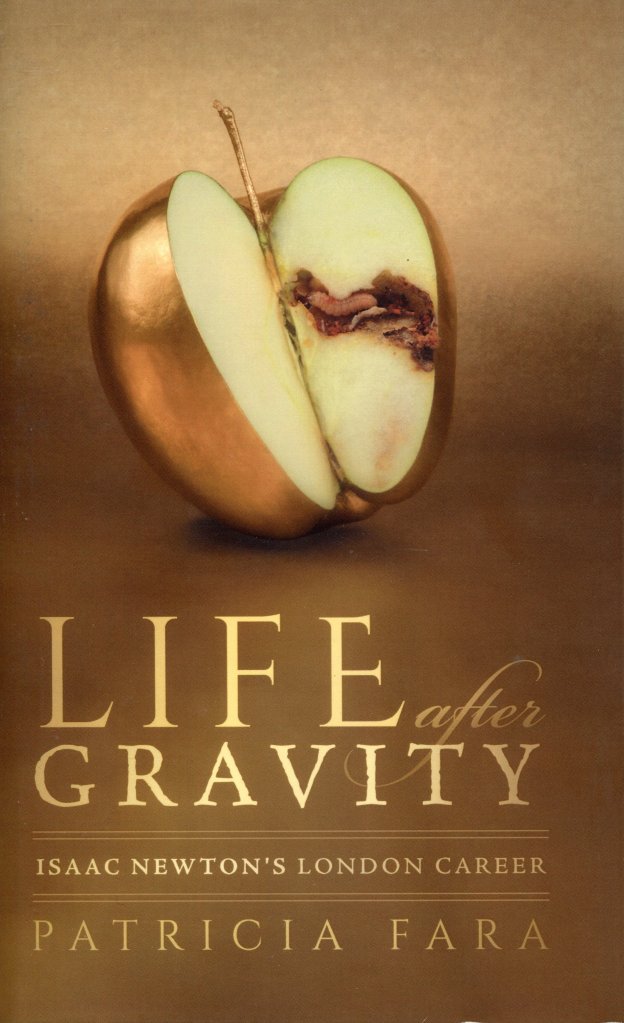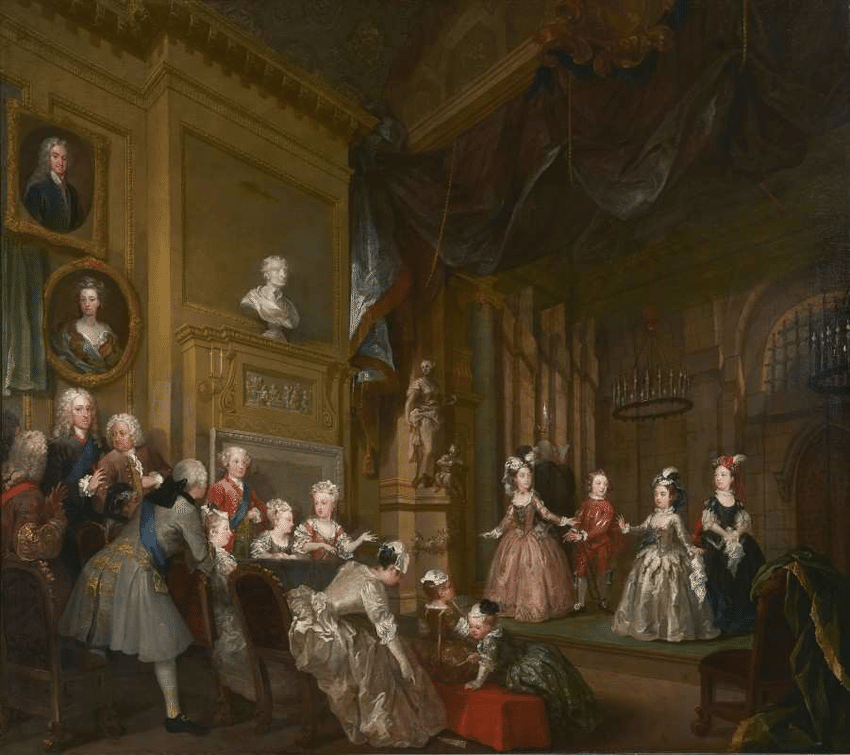I appear to have become something of a fan of the Cambridge University historian of science, Patricia Fara. The first book of hers that I read, and that some years ago, was Newton: The Making of a Genius (Columbia University Press, 2002), an excellent deconstruction of the myths that grew up around England’s most lauded natural philosopher during the eighteenth and nineteenth centuries. I do not own this volume, but I do own her Pandora’s Breeches: Women, Science and Power in the Enlightenment (Pimlico, 2004), which delivers what the title promises. A detailed look at women, who contributed to enlightenment science and, who usually get ignored in mainstream history of science. I also own her An Entertainment for Angels: Electricity in the Enlightenment (Icon Books: 2002), a delightful romp through the first century of the scientific investigation of phenomenon of electricity. Also on my bookshelf is her Science: A Four Thousand Year History (OUP, 2009), a fresh and provocative one volume overview of the history of science. To round out my Fara collection I also have her Sex, Botany & Empire: The Story of Carl Linnaeus and Joseph Banks (Icon Books, 2003) on my to-read-pile; I mean who could resist a title like that from an author with a proven track record for excellent history of science narratives.
Patricia Fara’s latest publication returns to the subject of England’s most iconic natural philosopher, Isaac Newton, but deals not with his science but the last thirty years of his life after he had effectively abandoned the production of new science and mathematics for the life of a gentleman about town, Life after Gravity: Isaac Newton’s London Career[1].

Before I go into detail, this book maintains the high standards of historical research and literary excellence that Fara has consistently displayed over her previous publication.
Anybody, who is reasonably acquainted with Newton’s biography will already know that he turned his back on Cambridge and academia in 1696, to move to London to become first Warden and then in 1699 Master of the Royal Mint. This move enabled him to become President of the Royal Society in 1704, an integral part of the socio-political power structure in the capitol during the next thirty years, and also to become immensely wealthy. It is to this part of Newton’s life that Fara turns her sharp and perceptive eye and which she analyses with her acerbic, historical scalpel.
I have over the decades read a lot of Newton biographies, as well as papers and books that deal with specific aspects of his life and work, including aspects of the last thirty years of his life that he spent living in London, such as Tom Levenson’s excellent Money for Nothing: The South Sea Bubble and the Invention of Modern Capitalism. Despite this, I learnt a lot of new things from Fara’s excellent small volume.
Fara’s book is actually two interlinked narratives; the contextual biography of Newton’s years in London is interwoven with an analysis of William Hogarth’s 1732 painting, The Indian Emperor. Or the Conquest of Mexico. As performed in the year 1731 in Mr Conduitt’s, Master of the Mint, before the Duke of Cumberland etc. Act 4, Scene 4.

This painting by Hogarth shows a performance of a heroic drama, written by John Dryden (1631–1700) and first performed in 1665, being performed by a group of children in the drawing room of the town house of John Conduitt (1688–1737), the husband of Newton’s niece and one time housekeeper, Catherine Barton; Conduitt was also Newton’s successor as Master of the Mint. This picture depicts several of the main characters of the book’s biographical narrative, including Newton as a bust mounted on the wall. It also reflects some of the main themes of the books such as imperialism. The interweaving of the descriptions of the painting and the various episodes of Newton’s life in London is a very powerful literary device and is representative for the fact that Fara’s book is deeply contextual and not just a simple listing of Newton’s activities during those last thirty years of his life.
The book is divided into three sections, the first of which deals mainly with Newton’s various residences in London and his general domestic life, within the context of early eighteenth-century London. The second section turns the reader’s attention to Newton’s reign at the Royal Society and the reign of the first Hanoverian King, George I, and his family and court with whom Newton was intimately involved. The final section takes the reader to the Royal Mint and also turns the spotlight on English imperialism.
I’m not going to go into much detail, for that you’ll have to read the book and I heartily recommend that you do so, but I want to draw attention to two prominent aspects of the book that I found particularly good.
The first is, surprising perhaps in a Newton biography, a good dose of feminist historiography. As one would expect from the author of Pandora’s Breeches and more recently A LAB of ONE’S OWN: Science and Suffrage in the First World War(OUP, 2018)–I love the indirect Virginia Woolf reference–Fara pays detailed attention to the women in her narrative.
In her description of life in the Tower of London, where the Mint was situated and where Newton initially lived when he moved to London, she introduces the reader to Elizabeth Tollet (1694-1754). Tollet, a poet and translator, was the handicapped daughter of George Tollet a Royal Navy, who lived with her father in the Tower. Unusually for the time, she was highly educated, Fara uses her diaries to describe life in the Tower and also features some of her poems that dealt with Newtonian natural philosophical themes and her elegy, On the Death of Sir Isaac Newton (1727).
Fara also paints a very sympathetic portrait of Queen Anne (1665–1714), who ruled over Britain for slightly more that the first decade of the eighteenth century. She has often been much maligned by her biographers and Fara presents her in a more favourable light. Newton niece and sometime housekeeper, Catherine Barton (1679–1739), naturally, features large and in this context Fara discusses an interesting aspect of male chauvinism from the period, of which I was previously unaware. The habit of older gentlemen having sexual relations with much younger, often closely related, women sometimes within a marital relationship, sometimes not. She details the case of Robert Hooke (1635–1703), who slept with his niece Grace. She speculates, whether Voltaire’s claim that Newton got his job at the Mint, because Charles Montagu (1661–1715) had slept with Catherine Barton is true or not. If he had, she would have been a teenager at the time.
The section on the Hanoverian court concentrates on Caroline of Ansbach (1683–1737), George I daughter-in-law, a fascinating woman, who enjoyed intellectual relations with both Leibniz and Newton. Effectively abandoning the former for the latter, when she moved, with the court, from Hanover to London. Fara’s book is worth the purchase price alone, for her presentation of the women surrounding Newton during his London residency.
The second aspect of the book that I would like to emphasise is Fara’s treatment of British imperialism and the associated exploitation and racism during the first third of the eighteenth century. Recently, there have been major debates about various aspects of these themes. In the general actually debate on racism, historians have pointed out that the modern concept of racism is a product of the eighteenth century. Others have opposed this saying that one should instead emphasise the eighteenth century as the century of the Enlightenment, quoting Newtonian physics and astronomy as one of its great contributions, apparent unsullied by associations with Empire and slavery. Coming from a different direction the debate on the restoration of art works stolen by the colonial powers, Britain leading the pack, has cast another strong spotlight on this period and its evils.
Fara tackles the themes head on. She goes into detail about how the gold that Newton minted in large quantities, the major source of his own private wealth, came from British exploitation of Africa. She also goes into quite a lot of detail concerning the joint stock companies, set up to further Britain’s imperial aims, to establish and exploit its colonies and their active involvement in the slave trade. As well as profiting from the African gold that he minted for the British government, Newton also profited from his extensive investments in the East India Company and initially from his investments in the South Sea Company, both of which were involved in the slave trade. He, of course, famously also lost heavily in the collapse of the South Sea Company’s share price. Fara successfully removes the clean white vest that many attempt to award Newton in this context.
Fara’s book is much more that a portrait of Newton’s final three decades, it is also a wide ranging and illuminating portrait of London in the first third of the eighteenth century, its social life, its economics, its politics, and its imperialism. This is not just the London of Newton, but also of Swift, Defoe, Pope, and many others. Everything is carefully and accurately researched and presented for the reader in an attractive, easy to read, narrative form. The book has endnotes, which are just references to the very extensive bibliography. There is also as very good index.
The book is illustrated with a block of colour illustration, which are repeated in black and white at the relevant points in the text, and here I must make my only negative comment on Fara’s otherwise excellent book. The quality of the reproduction of colour prints is at best mediocre and, in my copy at least the black and white prints are so dark as to render them next to useless. Something went wrong somewhere.
As should be clear, if you have read your way through all of this review, I think this is an excellent book and I can’t recommend it enough. If I had a five-star system of valuation, I would be tempted to give Fara’s volume six, with perhaps half a star taken off for the poor quality of the illustrations, for which, of course, the author is not responsible. In my opinion it is a must read for anybody interested in Newton and his life but also for those more generally interested in the Augustan Age. If you one of those general interested in reading, well written, accessible, entertaining, and informative history books then you can add Fara’s tome to your reading list without reservations.
[1] Patricia Fara, Life after Gravity: Isaac Newton’s London Career, OUP, Oxford, 2021